Have You Heard of Eastern Hollowed – Out Masks?

In quite a few movies and TV dramas featuring historical settings, characters donning Hanfu sport similar hollowed – out half – face masks, which have become rather popular. Some netizens are left wondering: How are these accessories worn on the face? Will they really not fall off?
In fact, from the front, it’s hard to tell how this kind of hollowed – out mask is worn. But from the side, you can see that it is fastened at the back of the head with ropes on both sides. Then, through the nasal bridge groove on the mask, the mask can be supported and is not likely to slide down.
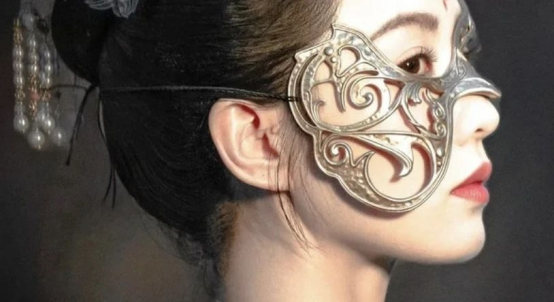
Ⅰ. Where Does it Originate from?
Some people say that this kind of mask is very Western, isn’t it? Well, you really haven’t seen Chinese hollowed – out masks. The most impressive ones should be the masks from the Shang and Zhou dynasties’ civilizations, represented by the Sanxingdui and Jinsha site. During this period, the masks were made of gold or bronze. Most of the mask shapes can be divided into two types: human face masks and beast face masks. As shown in the picture above, the human face masks have big eyes and big ears, and their shapes are quite exaggerated.
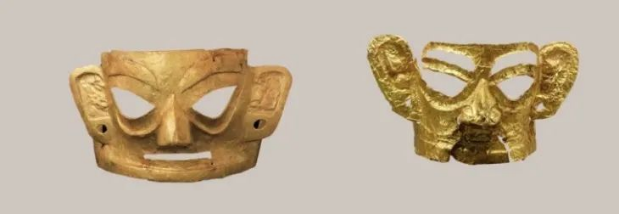
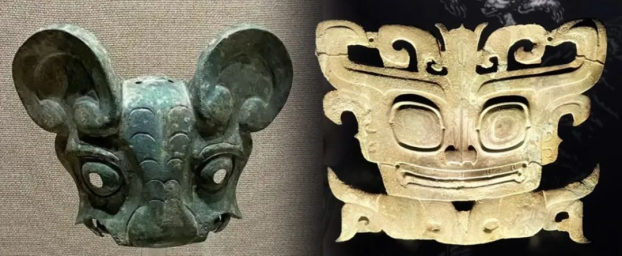
The beast face masks are also rather abstract. They usually take the shape of a main animal as the basis and then incorporate some characteristics of other animals. For example, can you guess what animals the two masks above represent?
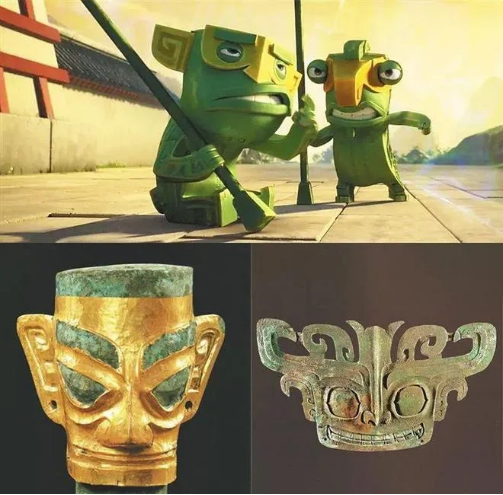

Many people think that this kind of mask was worn on the face. However, some experts have pointed out that when these masks were unearthed, their backs were not polished and were very rough. So, it is very likely that they were placed on a certain stone pillar for sacrificial ceremonies, praying for blessings, and warding off evil spirits. There is another type made of wood, which could actually be worn on the face. But is this really the case? Well, we might as well ask our ancestors if we could travel back in time. Nevertheless, it doesn’t stop people from being attracted to its mysterious charm. For example, the design of the barrier beasts in the movie Ne Zha 2 drew inspiration from this kind of mask.The bronze Taotie mask in the picture below dates back to the Northern Wei Dynasty.
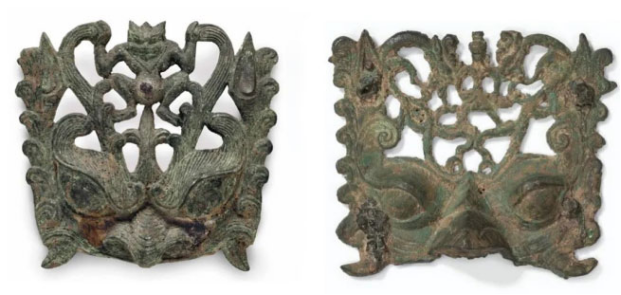

If the masks from the Shang and Zhou dynasties were rather abstract, then let’s turn our attention to the masks from the Northern Wei Dynasty. During this era, people wore distinct styles of Hanfu. Complementing their elaborate Hanfu, the masks from this period already have the feel of a modern hollowed – out mask and are stylishly designed. Although they feature the Taotie pattern (饕餮纹), unlike the masks from the Shang and Zhou dynasties that emphasized linear aesthetics, these masks are highly three – dimensional. They bear a strong resemblance to the hollowed – out masks we see today. Some of them even depict a person riding a mythical beast, presenting a harmonious symmetrical aesthetic. Against the backdrop of Hanfu culture, this also represents a certain shift in ideology—from the worship of nature to the belief that humans can conquer nature.
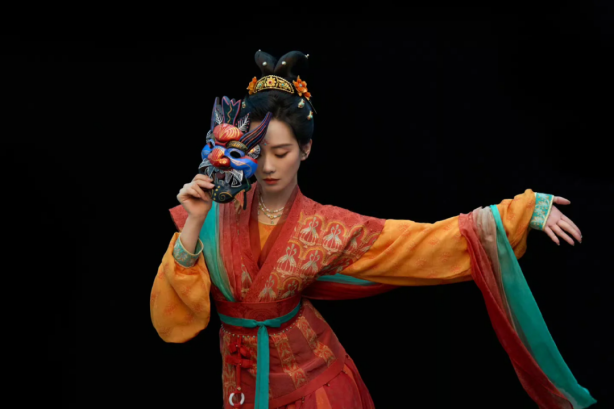
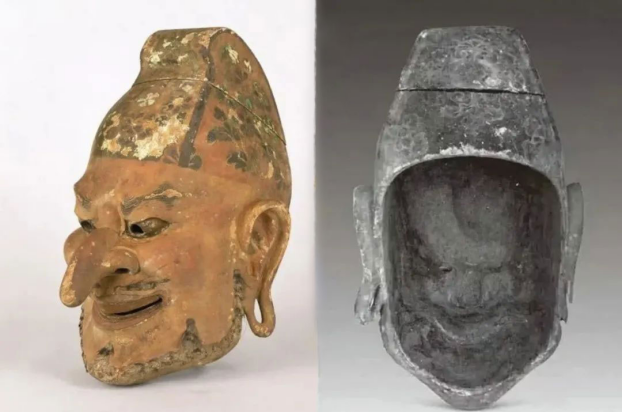
Let’s take a look at the masks from the Tang Dynasty. They have evolved from being abstract to being absolutely realistic. For example, this Hu-style mask is very similar to the appearance of a real person. There are hollowed-out parts at the positions of the two eyes, which indicates that it was a mask actually worn by a real person.
Moreover, lion masks and lion dance figurines have been unearthed in places like Astana. It can be seen that this kind of mask was already being used in dance and music performances. According to the record in Miscellaneous Records of Yuefu: The Qiuci Section (《乐府杂录·龟兹部》), in the “Five-Constant Lion Dance” from Qiuci, there were a total of five people dressed as lions with furs of different colors. Each lion was surrounded by twelve lion handlers who wore red headbands, colorful clothes, and held red whisk-like props, teasing and dancing with the lions.
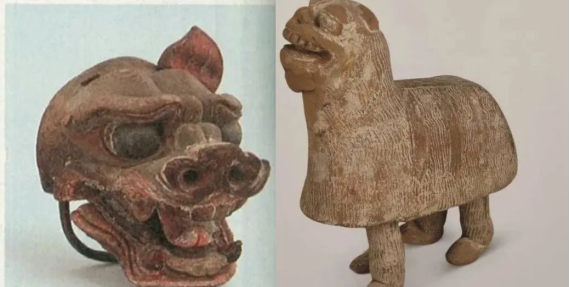
Ⅱ. Ritual Sense
On the other hand, masks also became an important part of the ritual sense in people’s daily lives. For instance, in many children’s paintings from the Song Dynasty, children would wear masks during specific times and have fun with “cosplay.” They would dance and gesticulate, driving away evil spirits, and it also carried the meaning of praying for a good harvest. According to the record in Book of the Later Han, “One day before the La Festival, there was a grand exorcism ceremony. Among the eunuchs, one hundred and twenty boys aged between ten and twelve were selected as Zhenzi (侲子).” In Miscellaneous Records of Yuefu (乐府杂录) from the Tang Dynasty, it is described that, “There were five hundred Zhenzi, all of whom were children. They wore red pleated clothes and green robes, and wore masks. On the last day of a lunar month, they held an exorcism ceremony in front of the Zichen Hall, with the imperial musical instruments played.”
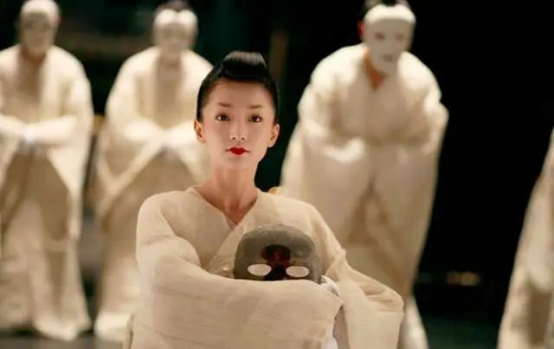
In China’s Nuo culture, it is believed that humans and gods have always coexisted. If gods want to communicate with humans, they need a medium, which is the Nuo mask. As the most important prop in Nuo opera, it is said that “When you put on a Nuo mask, you become a god; when you take it off, you become a human.” Yu Qiuyu even mentioned in his book Cultural Traces of Sorrow (《文化苦旅》): “Starting from entertaining the gods to entertaining people, and evolving from ancient sacrificial forms to entertainment activities widespread in villages, Nuo opera has left its mark all over the land of China and has gradually become inseparable from the cultural spirit of the entire nation.”
Some people say that do masks also serve as a tool for people with social anxiety to avoid social interactions? Well, the ancients had many such tools for social anxiety. For example, in the Tang Dynasty, the Hu-style Mi Luo (羃羅) could cover the entire face with gauze, which was much better than a mask. And the fancy designs of masks would only draw more attention to them.
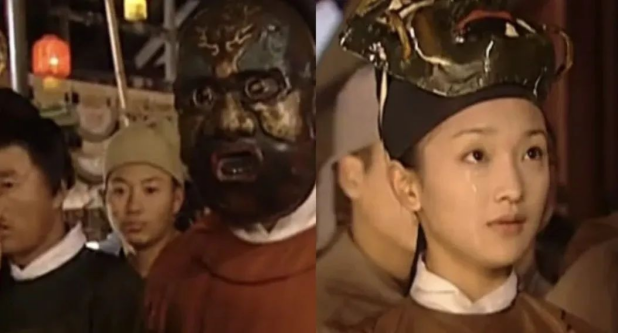
Summary
In current ancient costume movies and TV dramas where characters don Hanfu, masks frequently make an appearance when the male and female protagonists meet, as well as decorative masks that are used to shape the charm of the characters and add a sense of mystery. It can be said that there is a great variety of them. However, no matter what, masks represent yearning for beauty and blessings, and they are a kind of belief and expectation in the spiritual culture of the Chinese people.
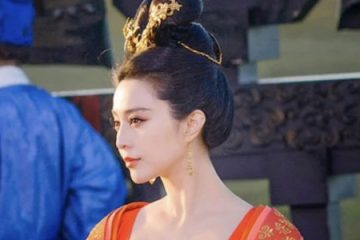
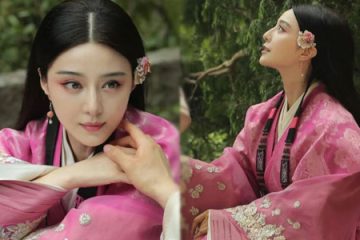
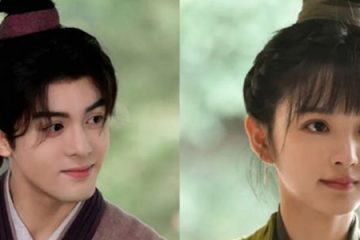
0 Comments